Life Scripts, Counter Scripts and Online Videos: The Struggle of Religious-Nationalist Community Epistemic Authorities against Military Service for Women
Abstract
1. Introduction
2. The Corpus of the Study
3. Methods
4. Structure
5. Individual and Community Life Scripts
6. Levels of Reward for Choosing the Normative Community Script
7. Counter Script
8. Enlistment of Women from the Religious-Nationalist Community in the IDF—The Hegemonic Script: National Service While Remaining within the Confines of the Gated Community
9. The Revolution of the Enlistment of Young Religious Women and the Evolution of a Rewarding Military Service Script for These Young Women
9.1. The Personal Level: The Personal Capital of Military Service: Personal Empowerment in the Army
9.2. The Community Level: Religious Capital in Military Service: A Communal Legitimacy That Follows Religious Legitimacy
9.3. The National Level: Military Service as National Capital: Taking Part in Fortifying Israel’s Security
10. Opposition to Enlistment Scripts and Their Reliance on Communal-Religious Logics
11. The Futility of Religious Logics
12. Online Videos Opposing Military Service for Women and the Attempt to Establish Non-Rewarding Counter-Scripts
- Counter script for personal capital reward from military service
- Counter script for collective capital reward (communal-familial-religious) from military service
- Counter script for national-symbolic capital reward from military service
12.1. Counter Script for Personal Capital Gained from Military Service: Personal Empowerment in the Army
12.1.1. The Psychosocial Component: Undermining the Empowerment of Maturation
12.1.2. The Psychological Component: Undermining the Empowerment of Erotic Capital
12.2. Counter Script for Religious Capital Gained from Military Service: Community Legitimacy Achieved from Religious Legitimacy
12.2.1. The Religious Aspect: A Disengagement of Religion
12.2.2. The Familial Aspect: A Disengagement of the Family’s Functions
12.3. Counter Script for National Capital Gained from Military Service: A Partnership Reinforcing Israel’s Security
13. Discussion
14. Conclusions
15. Thoughts for Future Research
- One future recommended study would be the direct influence of these videos on their consumers—potential female recruits and their families, and the discourse they created among then. We know that ultimately these videos were not very influential—as we have shown in this paper through statistical data, the number of female religious soldiers continued to rise. However, it would be fascinating to examine the concrete approach to these videos through ‘Reception studies’ (Schrøder 2019) that monitor the immediate discourse that followed the videos themselves. These studies may help identify the dominant reference themes that were created in response to these videos and the population groups that responded to them. For instance, whether they evoked rejection, ridicule, scorn, ambivalence, or any other type of response. Such analysis would be made possible in studies outside the category of our research, which wholly pertains to the study of political advertising principles with an emphasis on modes of approaching the public (Henneberg 2006). The study of reception, however, requires research pertaining to the category of researching the effectiveness of political and marketing campaigns (Thaler and Helmig 2013).
- It would also be interesting to examine whether similar influence tactics (such as the videos we have examined) exist in the USA and Canada and were a source of inspiration for the conservative organizations who created them. In general, the discourse we have discussed originates in what is known as ‘the new American and Canadian conservatism’ (Cass 2021), consisting of organizations who perceive the liberal elites as destructing the military and undermining its likelihood of winning the USA’s wars, in part due to the fact that the military is open to women and the LGBT community (Blain 2005). These organizations invest their efforts in battling against this reality, telling the military “to man up” (Jackson et al. 2012), and opposing the enlistment of women in combat positions by at least two methods: an attempt to prevent the enlistment of these women by approaching them directly (similarly to the tactics presented in the current paper), or by approaching young conservative women who wish to serve in the army despite their communities’ beliefs that the military should remain masculine. If such examples do in fact exist, they would be an interesting case study in order to examine whether they may have anything in common with the cases presented in the current paper.
Supplementary Materials
Author Contributions
Funding
Acknowledgments
Conflicts of Interest
References
- Adamker, Yaki. 2013. Rabbi Shmuel Eliyahu: Military service is unsuitable for a daughter of Israel. Walla News, December 16. [Google Scholar]
- Al-Rawi, Ahmed. 2015. Online Reactions to the Muhammad Cartoons: YouTube and the Virtual Ummah. Journal for the Scientific Study of Religion 54: 261–71. [Google Scholar] [CrossRef]
- Artzi-Sror, Chen. 2017. Eshet Chayil Mi Tikra. Yedioth Ahronoth, September 7. [Google Scholar]
- Avgar, Ido. 2017. Data on Recruitment of Religious Women to the IDF. Jerusalem: Knesset Research and Information Center. [Google Scholar]
- Aviner, Rabbi Shlomo. 2015. A girl enlisting in the IDF contributes to the destruction of the State. Knitted News, November 2. [Google Scholar]
- Barak-Erez, Daphne. 2007. On Women Pilots and Conscientious objection to military service: A single struggle or separate ones? In Studies in Law, Gender and Feminism. Tel Aviv: Tel Aviv University, pp. 65–98. [Google Scholar]
- Bell, Desmond. 2011. Documentary Film and the Poetics of History. Journal of Media Practice 12: 3–25. [Google Scholar] [CrossRef]
- Ben-Asher, Smadar, and Yaarit Bokek-Cohen ’. 2019. Negative Symbolic Capital and Politicized Military Widowhood. Journal of Political & Military Sociology 46: 301–23. [Google Scholar] [CrossRef]
- Ben-Asher, Smadar, and Udi Lebel. 2010. Social Structure Vs. Self-Rehabilitation: IDF Widows Forming an Intimate Relationship in the Sociopolitical Discourse. Journal of Comparative Research in Anthropology and Sociology 1: 39–60. Available online: http://hdl.handle.net/20.500.12424/1579686 (accessed on 9 September 2021).
- Berne, Eric. 1961. Transactional Analysis in Psychotherapy: A Systematic Individual and Social Psychiatry. New York: Grove Press. [Google Scholar]
- Berne, Eric. 1972. What Do You Say after You Say Hello?: The Psychology of Human Destiny. New York: Grove Press. [Google Scholar]
- Bick, Etta. 2016. Institutional layering, displacement, and policy change: The evolution of civic service in Israel. Public Policy and Administration 31: 342–60. [Google Scholar] [CrossRef]
- Blain, Michael. 2005. The Politics of Victimage: Power and subjection in a US anti-gay campaign. Critical Discourse Studies 2: 31–50. [Google Scholar] [CrossRef]
- Budaie-Hyman, Ranit. 2016. Religion-Gender-Military: Feminine Identities: Between Religion and Military in Israel. Ph.D. dissertation, Bar Ilan University, Ramat Gan, Pakistan. [Google Scholar]
- Caplan, Paula J. 2000. The New Don’t Blame Mother. New York: Routledge. [Google Scholar]
- Cass, Oren. 2012. A New Conservatism. Foreign Affairs 100: 116–28. [Google Scholar]
- Chester, Jeff, and Kathryn C. Montgomery. 2018. The Influence Industry: Contemporary Digital Politics in the United States. Tactical Technology. Available online: https://cdn.ttc.io/s/ourdataourselves.tacticaltech.org/ttc-influence-industry-usa.pdf (accessed on 9 September 2021).
- Chin, Elaine. 1994. Redefining “Context” in Research on Writing. Written Communication 11: 445–82. [Google Scholar] [CrossRef]
- Coleman, Justin T. 2014. Examining the Life Script of African-Americans: A Test of the Cultural Life Script. Applied Cognitive Psychology 28: 419–26. [Google Scholar] [CrossRef]
- Dar, Yechezkel, and Shaul Kimhi. 2000. Military service and self-perceived maturation among Israeli youth. Megamot 40: 591–616. [Google Scholar] [CrossRef]
- De Cillia, Rudolf, Martin Reisigl, and Ruth Wodak. 1999. The discursive construction of national identities. Discourse and Society 10: 149–73. [Google Scholar] [CrossRef]
- Deneulin, Severine. 2022. Religion and Development. In Elgar Encyclopedia of Development. Edited by Matthew Clarke. Cheltenham: Edward Elgar Publishing Ltd. [Google Scholar]
- Doane, Mary Ann. 2002. The "Woman’s Film": Possession and Address. In Home Is Where the Heart Is: Studies in Melodrama and Woman’s Film. Edited by Christine Gledhill. London: BFI Publishing, pp. 238–98. [Google Scholar]
- Elmezeny, Ahmed, Nina Edenhofer, and Jeffrey Wimmer. 2018. Immersive Storytelling in 360-Degree Videos: An Analysis of Interplay between Narrative and Technical Immersion. Journal of Virtual World Research 11: 1–13. [Google Scholar] [CrossRef]
- Erlich, Yifat. 2016. Halachic ruling is important to me but apparently not enough. This would not prevent me from realizing my dream of flying. Yedioth Ahronoth, October 13. [Google Scholar]
- Erskine, Richard G. 2009. Life Scripts and Attachment Patterns: Theoretical Integration and Therapeutic Involvement. Transactional Analysis Journal 39: 207–18. [Google Scholar] [CrossRef]
- Ettinger, Yair. 2015. The Number of religious women enlisting in the IDF doubled since 2010. Haaretz, May 6. [Google Scholar]
- Farah Bidjari, Azam. 2011. Attitude and Social Representation. Procedia-Social and Behavioral Sciences 30: 1593–97. [Google Scholar] [CrossRef]
- Fishman, Jennifer R., and Laura Mamo. 2002. What’s in a Disorder. Women and Therapy 24: 179–93. [Google Scholar] [CrossRef]
- Gilmore, Stephanie. 2008. Feminist Coalitions: Historical Perspectives on Second Wave Feminism in the United States. Champaign: University of Illinois Press. [Google Scholar]
- Gutierrez, Kris, Betsy Rymes, and Joanne Larson. 1995. Script, Counterscript, and Underlife in the classroom: James Brown versus Brown v. Board of Education. Harvard Educational Review 65: 445–71. [Google Scholar] [CrossRef]
- Hains, Rebecca C. 2009. Power Feminism, Mediated: Girl Power and the Commercial Politics of Change. Women’s Studies in Communication 32: 89–113. [Google Scholar] [CrossRef]
- Hanitzch, Thomas, and Tim P. Vos. 2017. Journalistic Rules and the Struggle over Institutional Identity: The Discursive Constitution of Journalism. Communication Theory 27: 115–35. [Google Scholar] [CrossRef]
- Harre, Rom. 1998. The Singular Self. Thousand Oaks: Sage Publishing. [Google Scholar]
- Henneberg, Stephan C. M. 2006. Leading or Following? A Theoretical Analysis of Political Marketing Postures. Journal of Political Marketing 5: 29–46. [Google Scholar] [CrossRef]
- Herzog, H. 1998. Homefront and Battlefront: The Status of Jewish and Palestinian Women in Israel. Israel Studies 3: 61–84. Available online: https://www.jstor.org/stable/30246796 (accessed on 9 September 2021).
- Hollander, Y. 2017. Innovation in the books of Jewish religious literature: A guidebook to the female religious recruit. Makor Rishon, August 25. [Google Scholar]
- Horno-Lopez, Antonio. 2015. The Particular Visual Language of Anime: Design, Color and Selection of Resources. Animation Practice, Process & Production 5: 39–56. [Google Scholar] [CrossRef]
- Hunting, Kyra. 2021. Critical content analysis: A methodological proposal for the incorporation of numerical data into critical/cultural media studies. Annals of the International Communication Association 45: 39–58. [Google Scholar] [CrossRef]
- Husband, Charles. 2007. Social Work in an Ethnically Diverse Europe. Social Work and Society 5. Available online: http://www.socwork.net/2007/festschrift/esp/husband (accessed on 9 September 2021).
- Ingram, Robert. 1985. Transactional Script Theory Applied to the Pathological Gambler. Journal of Gambling Behavior 1: 89–96. [Google Scholar] [CrossRef]
- Jackson, Joshua J., Felix Thoemmes, Kathrin Jonkmann, Oliver Lüdtke, and Ulrich Trautwein. 2012. Military Training and Personality Trait Development: Does the Military Make the Man, or Does the Man Make the Military? Psychological Science 23: 270–7. [Google Scholar] [CrossRef]
- Joachim, Jutta, and Andrea Schneiker. 2012. Changing discourses, changing practices? Gender mainstreaming and security. Comparative European Politics 10: 528–63. [Google Scholar] [CrossRef]
- Kaplan, Gila. 2007. Tzahali and Roni. Religious Kibbutz Organization Website. Available online: http://www.kdati.org.il/cgi-webaxy/sal/sal.pl?lang=he&ID=812319_kdati&act=show&dbid=pages&dataid=pages_891040_kdati_info_amudim_5767_715_09.htm (accessed on 9 September 2021).
- Kemp, Martin. 2010. Style and Non-Style in Anatomical Illustration: From Renaissance Humanism to Henry Gray. Journal of Anatomy 216: 192–208. [Google Scholar] [CrossRef]
- Kuhn, Annette. 1992. Women’s Genres. In The Sexual Subject—A Screen Reader in Sexuality. Edited by Mandy Merck. London: Routledge, pp. 301–11. [Google Scholar]
- Lebel, Udi. 2014. ‘Blackmailing the army’—’Strategic Military Refusal’ as policy and doctrine enforcement: The formation of a new security agent. Small Wars & Insurgencies 25: 297–328. [Google Scholar] [CrossRef]
- Lebel, Udi. 2015. Settling the Military: The Pre-military Academies Revolution and the Creation of a New Security Epistemic Community—The Militarization of Judea and Samaria. Israel Affairs 21: 361–91. [Google Scholar] [CrossRef]
- Lebel, Udi. 2016. The ‘Immunized Integration’ of Religious-Zionists within Israeli Society. Social Identities 22: 642–60. [Google Scholar] [CrossRef]
- Lebel, Udi, and Guy Hatuka. 2016. De-militarization as political self-marginalization: Israeli Labor Party and the MISEs (members of Israeli security elite) 1977–2015. Israel Affairs 22: 641–63. [Google Scholar] [CrossRef]
- Leo, Brooklyn. 2020. The Colonial/Modern [Cis]Gender System and Trans World Traveling. Hypatia 35: 454–74. [Google Scholar] [CrossRef]
- Lombardo, Emanuela, and Alba Alonso. 2020. Gender Regime Change in Decentralized States: The Case of Spain. Social Politics 27: 449–66. [Google Scholar] [CrossRef]
- Lotan, Orly, and Yuval Worgen. 2017. IDF Service of Religious Women. Jerusalem: The Knesset Research and Information Center. [Google Scholar]
- Massey, Lyle. 2017. Against the ‘Statue Anatomized’: The Art of Eighteenth-Century Anatomy on Trial. Art History 40: 68–103. [Google Scholar] [CrossRef]
- Mauksch, Stefanie. 2017. Managing the dance of Enchantment. Organization 24: 133–53. [Google Scholar] [CrossRef]
- Neumann, Iver B. 2005. To Be a Diplomat. International Studies Perspectives 6: 72–93. Available online: https://www.jstor.org/stable/44218353 (accessed on 9 September 2021). [CrossRef]
- Nichols, Bill. 2008. Documentary Reenactment and the Fantasmatic Subject. Critical Inquiry 35: 72–89. [Google Scholar] [CrossRef]
- Overton, James A. 2013. ‘Explain’ in scientific discourse. Synthese 190: 1383–405. [Google Scholar] [CrossRef]
- Parks, Gabriel. 2020. Considering the Purpose of ‘An Alternative Sense-Making Collective’: A Rhetorical Analysis of the Intellectual Dark Web. Southern Communication Journal 85: 178–90. [Google Scholar] [CrossRef]
- Peretz, Nissim. 2013. Temperamental times in religious-Zionism: Are girls allowed to serve in the IDF? Kikar Hashabat, December 17. [Google Scholar]
- Puterkovsky, Shlomo. 2014. Rabbi Druckman: The army is no place for girls. Inn, March 2. [Google Scholar]
- Raggatt, Peter T. F. 2015. Positioning: Dialogical voice in mind and culture. International. Review of Victimology 25: 249–70. [Google Scholar] [CrossRef]
- Redmon, Allen H. 2016. This is A […] Story; The Refusal of a Master Text in Noah Hawley’s Fargo. Linguaculture 1: 16–26. [Google Scholar] [CrossRef]
- Reilly, Ian. 2007. Revenge is Never a Straight Line: Transgressing Heroic Boundaries: Medea and the (Fe)Male Body in Kill Bill. Studies in Popular Culture 30: 27–50. Available online: https://www.jstor.org/stable/23416196 (accessed on 9 September 2021).
- Rosman-Stollman, Elisheva. 2018a. Military Service as Bargaining: The Case of Religious Women Soldiers in Israel. Politics, Religion and Ideology 19: 158–75. [Google Scholar] [CrossRef]
- Rosman-Stollman, Elisheva. 2018b. (Not) Becoming a Norm: Military Service by Religious Women as a Process of Social Legitimation. Israel Studies Review 33: 42–60. [Google Scholar] [CrossRef]
- Schrøder, Kim Christian. 2019. Audience Reception Research in a Post-broadcasting Digital Age. Television & New Media 20: 155–69. [Google Scholar] [CrossRef]
- Shaw, F., J. Burgess, K. Crawford, and A. Bruns. 2013. Sharing news, saying thanks, making sense. Australian Journal of Communication 40: 23–40. [Google Scholar]
- Shohat, Ella. 2005. Israeli Film: West/East and the Politics of Representation. Raanana: The Open University Publishing House. [Google Scholar]
- Simmons, Marlene Ruck. 2007. Critical Vulnerability. Journal of Thought 42: 79–97. Available online: https://www.jstor.org/stable/42589911 (accessed on 9 September 2021).
- Slovik, Gil, and Assaf Voll. 2012. Kravi Ze Hachi Achoti: Pre-military academy for girls. Nrg, December 24. [Google Scholar]
- Swed, Ori, and John Sibley Butler. 2015. Military Capital in the Israeli Hi-tech Industry. Armed Forces & Society 41: 123–41. [Google Scholar] [CrossRef]
- Thaler, Julia, and Bernd Helmig. 2013. Theoretical Framework of Social Marketing Effectiveness: Drawing the Big Picture on its Functioning. Journal of Nonprofit & Public Sector Marketing 25: 211–36. [Google Scholar] [CrossRef]
- Tirosh, Yofi. 2014. Zero in Human Relations? On the line connecting an M-16 and a stapling gun. Theory and Criticism 43: 301–11. [Google Scholar]
- Tzou, Carrie, and Philip Bell. 2012. The role of borders in environmental education: Positioning, power and marginality. Ethnography and Education 7: 265–82. [Google Scholar] [CrossRef]
- Williams, Linda. 2000. Something Else Besides a Mother- Stella Dallas and the Maternal Melodrama. In Feminism and Film. Edited by E. Ann Kaplan. New York: Oxford University Press, pp. 479–504. [Google Scholar]
- Yanay-Ventura, Galit. 2016. Multifaceted Religious Feminism—The Case of Modern Orthodox Feminists in Israel. Sociology and Anthropology 4: 17–28. [Google Scholar] [CrossRef][Green Version]
- Yanay-Ventura, Galit, and Niza Yanay. 2016. Unhyphenated Jewish religious feminism. Women’s Studies International Forum 55: 18–25. [Google Scholar] [CrossRef]
- Yefet, Karin Carmit, and Shulamit Almog. 2016. Religionization, Exclusion and the Military: Zero in Gender Relations. Tel Aviv University Law Review 39: 243–316. Available online: https://heinonline.org/HOL/LandingPage?handle=hein.journals/telaviv39&div=14&id=&page= (accessed on 9 September 2021).
- Yehoshua, Y. 2014. Eshet Chayil. Yedioth Ahronoth, January 29. [Google Scholar]
- Yehoshua, Y. 2018. Be’Ohala Shel Torah. Yedioth Ahronoth, May 29. [Google Scholar]
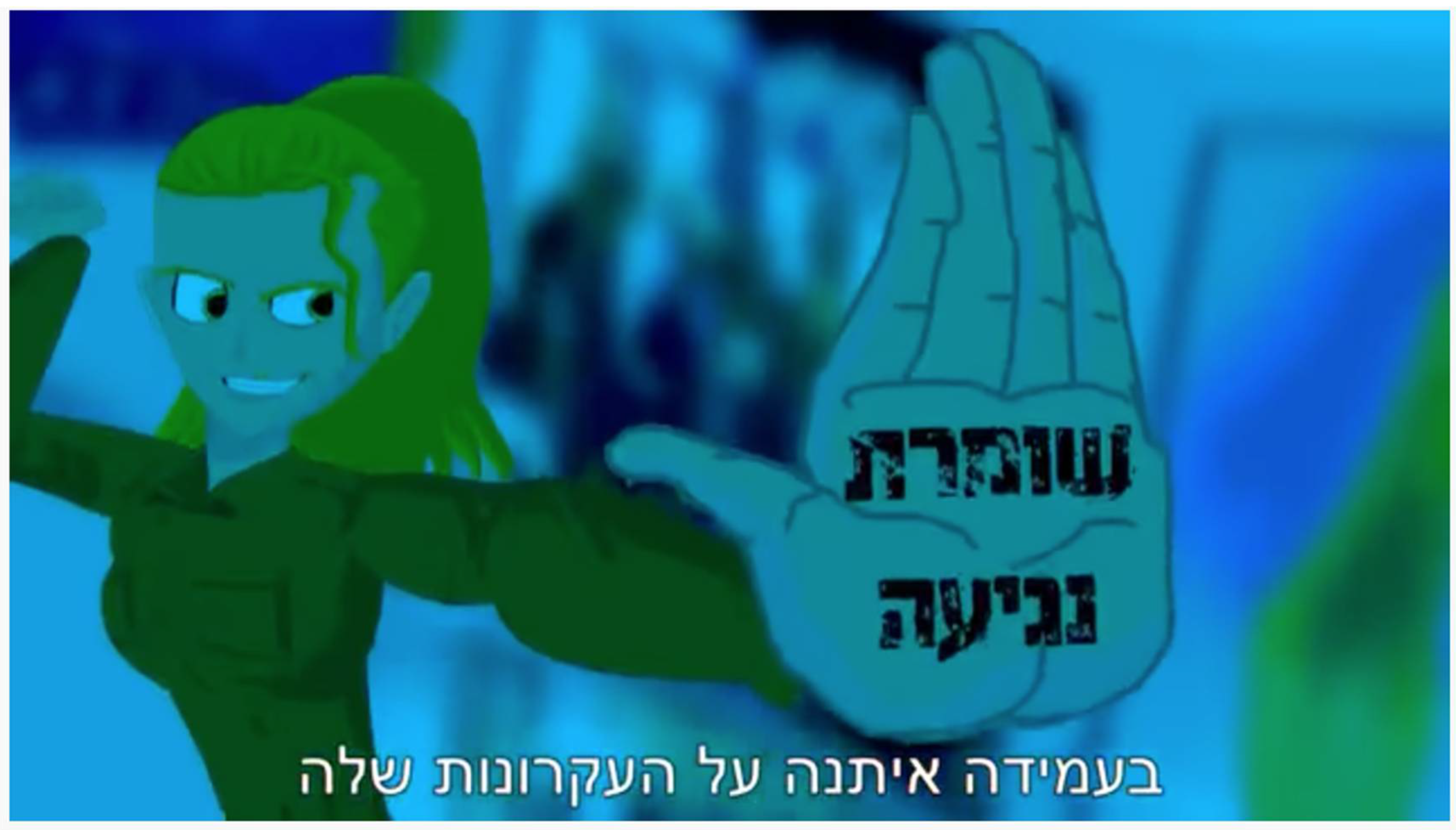
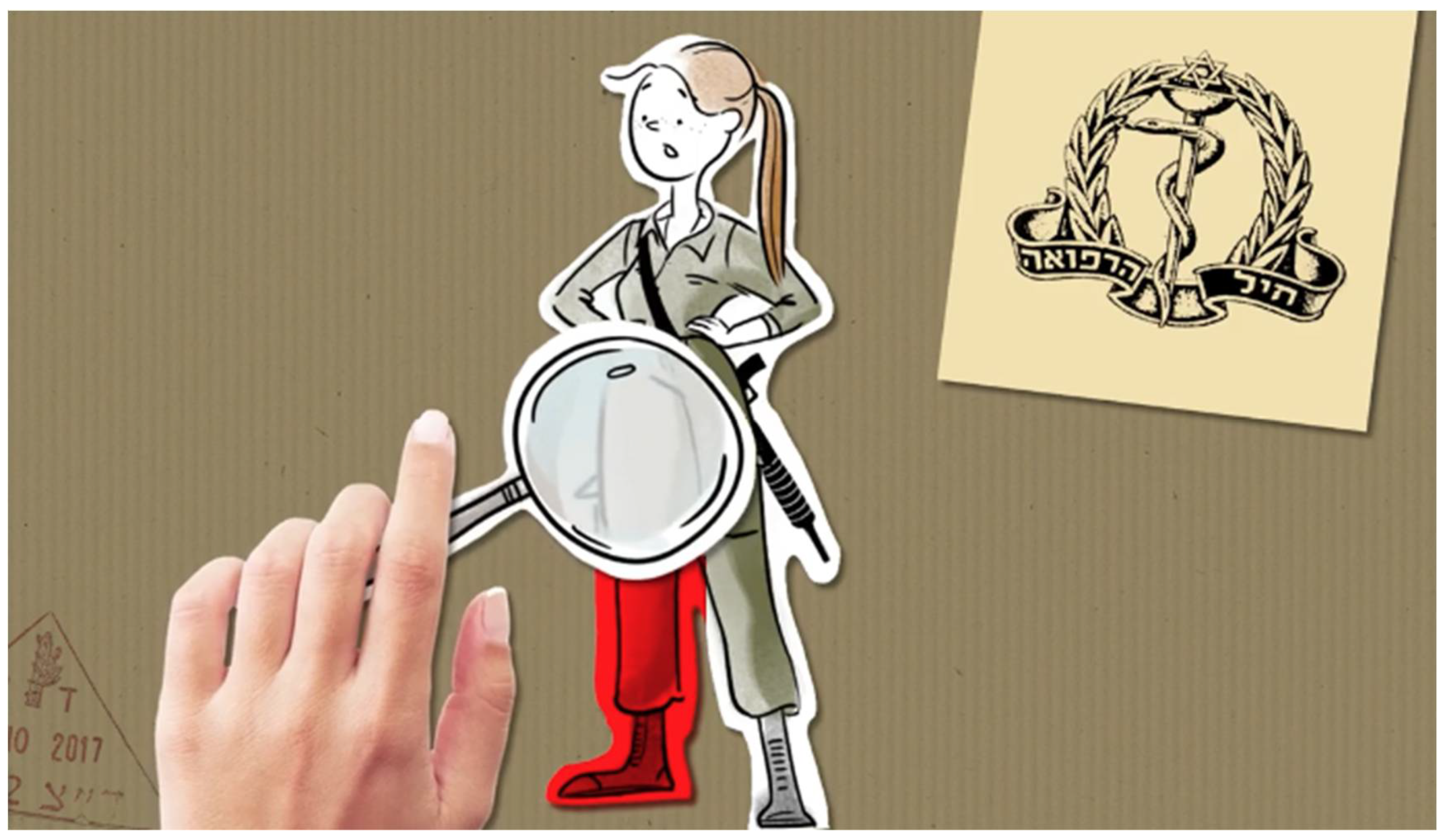
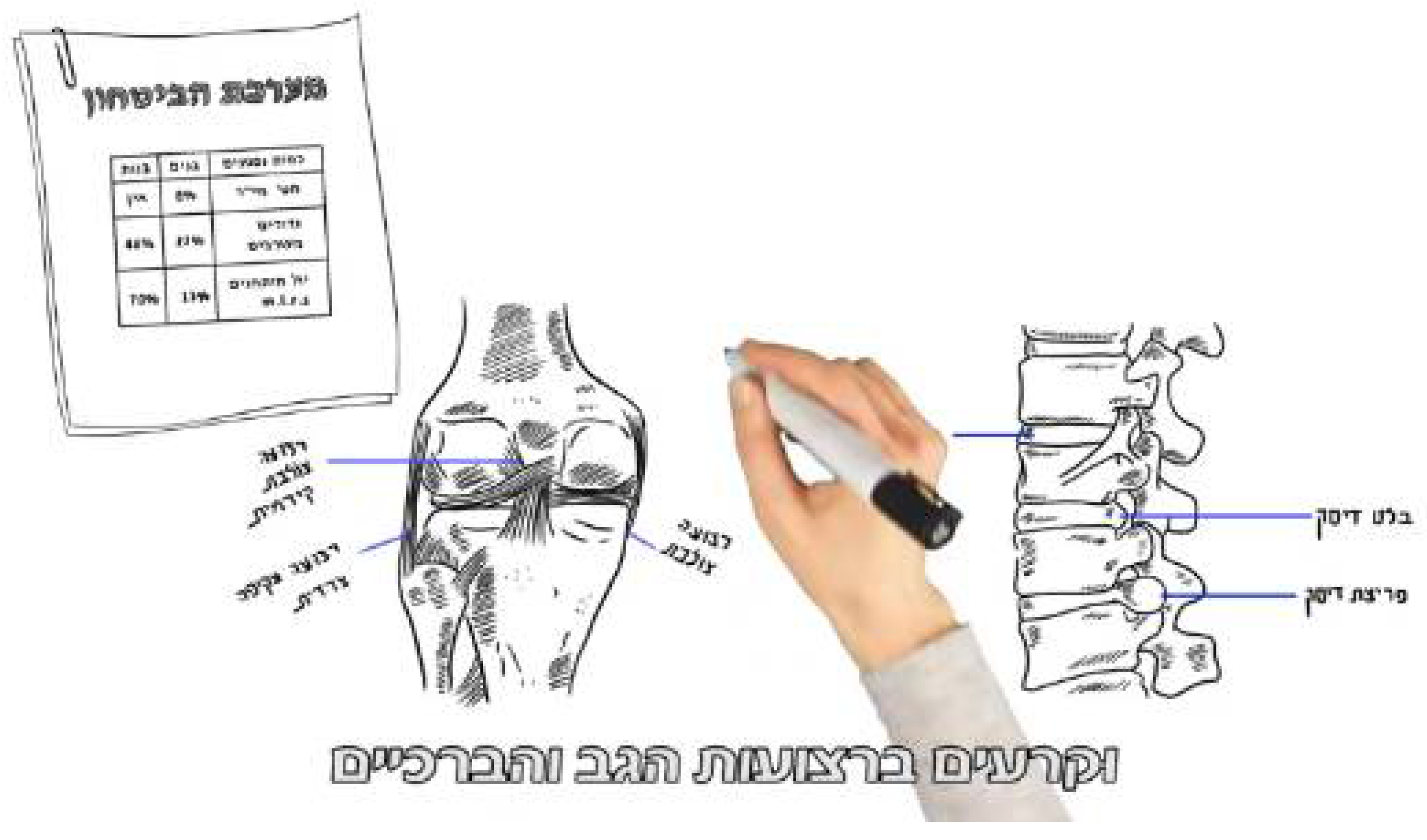
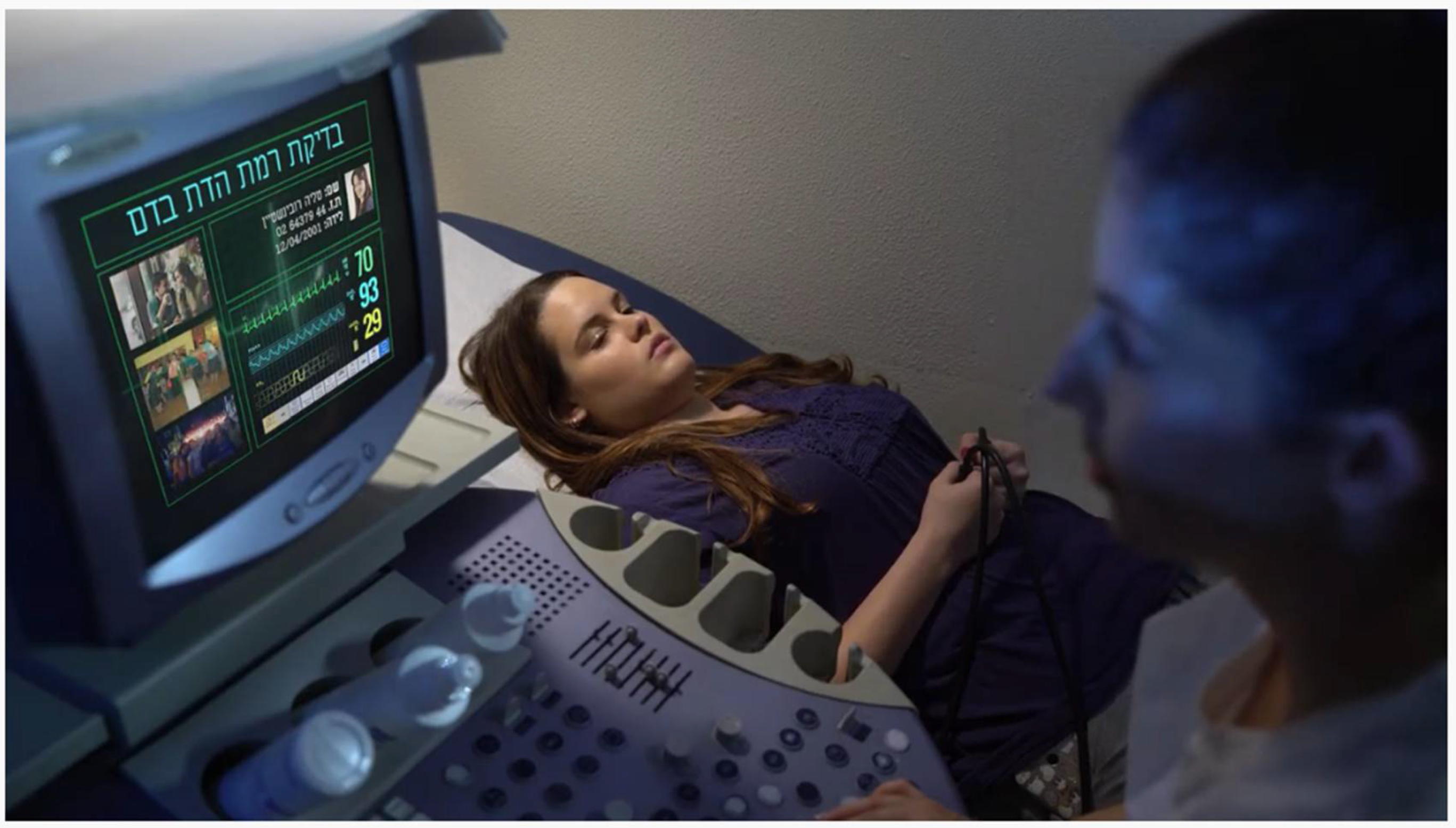
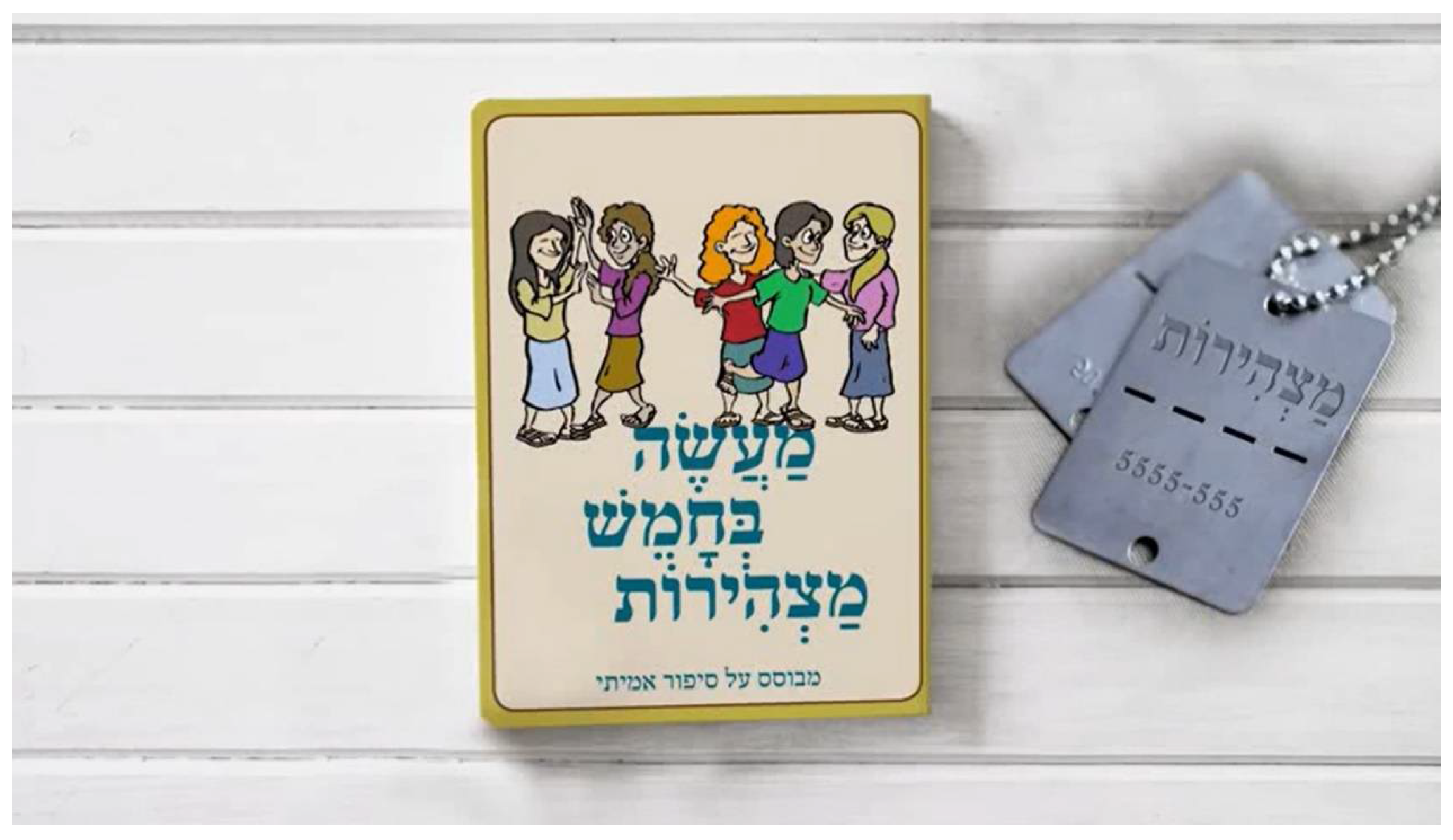
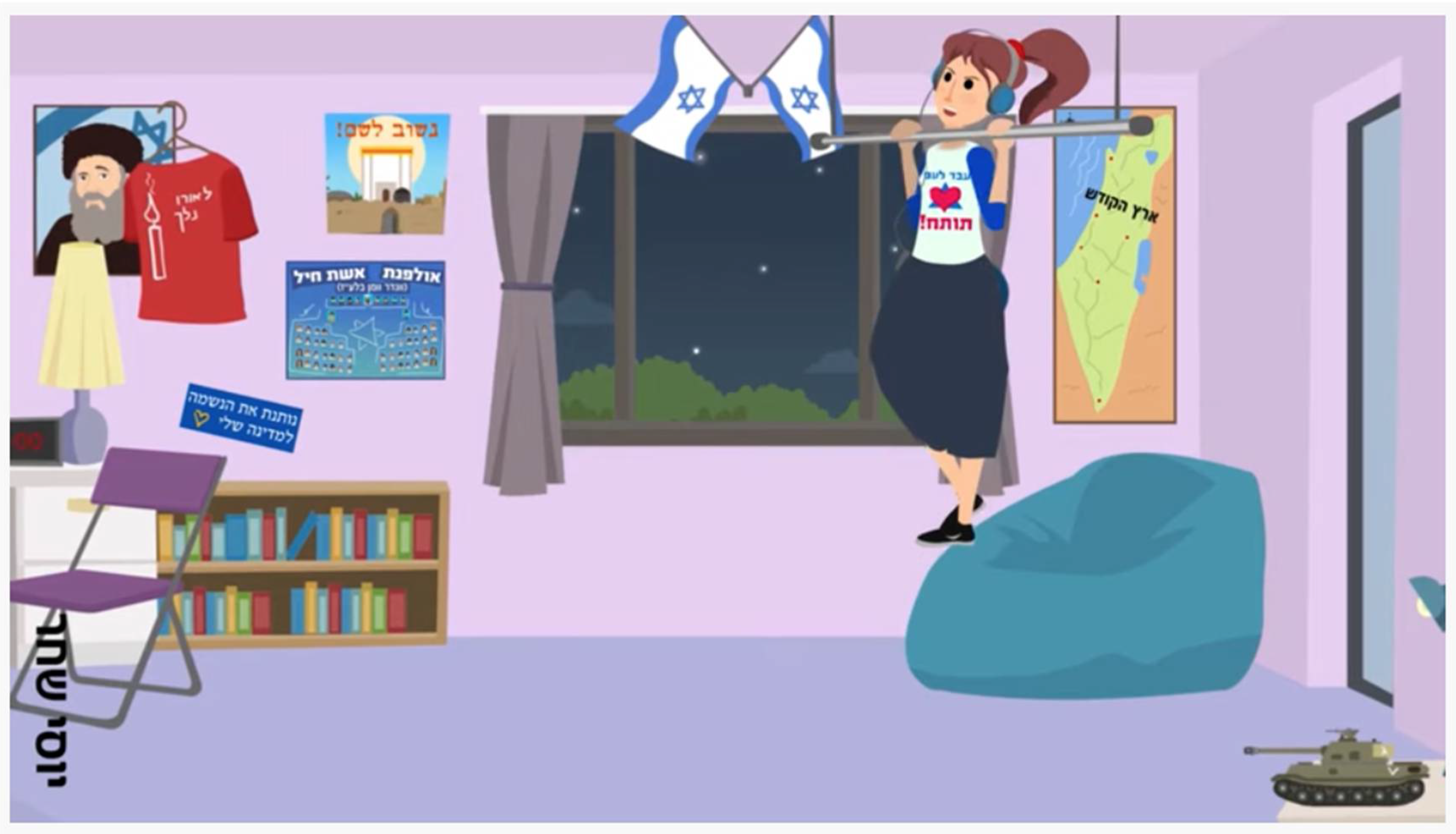
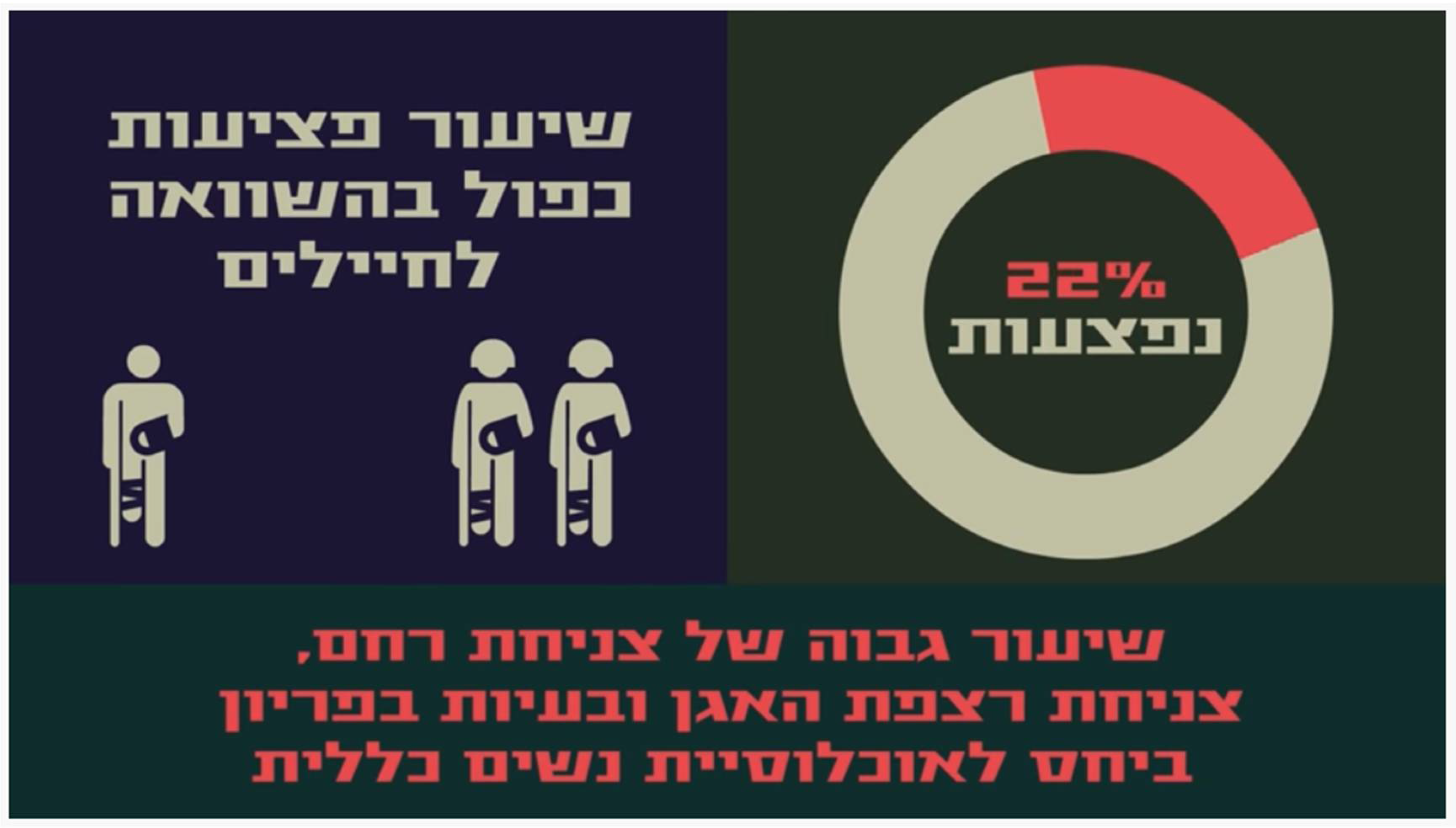
Publisher’s Note: MDPI stays neutral with regard to jurisdictional claims in published maps and institutional affiliations. |
© 2021 by the authors. Licensee MDPI, Basel, Switzerland. This article is an open access article distributed under the terms and conditions of the Creative Commons Attribution (CC BY) license (https://creativecommons.org/licenses/by/4.0/).
Share and Cite
Lebel, U.; Masad, D. Life Scripts, Counter Scripts and Online Videos: The Struggle of Religious-Nationalist Community Epistemic Authorities against Military Service for Women. Religions 2021, 12, 750. https://doi.org/10.3390/rel12090750
Lebel U, Masad D. Life Scripts, Counter Scripts and Online Videos: The Struggle of Religious-Nationalist Community Epistemic Authorities against Military Service for Women. Religions. 2021; 12(9):750. https://doi.org/10.3390/rel12090750
Chicago/Turabian StyleLebel, Udi, and Dana Masad. 2021. "Life Scripts, Counter Scripts and Online Videos: The Struggle of Religious-Nationalist Community Epistemic Authorities against Military Service for Women" Religions 12, no. 9: 750. https://doi.org/10.3390/rel12090750
APA StyleLebel, U., & Masad, D. (2021). Life Scripts, Counter Scripts and Online Videos: The Struggle of Religious-Nationalist Community Epistemic Authorities against Military Service for Women. Religions, 12(9), 750. https://doi.org/10.3390/rel12090750





